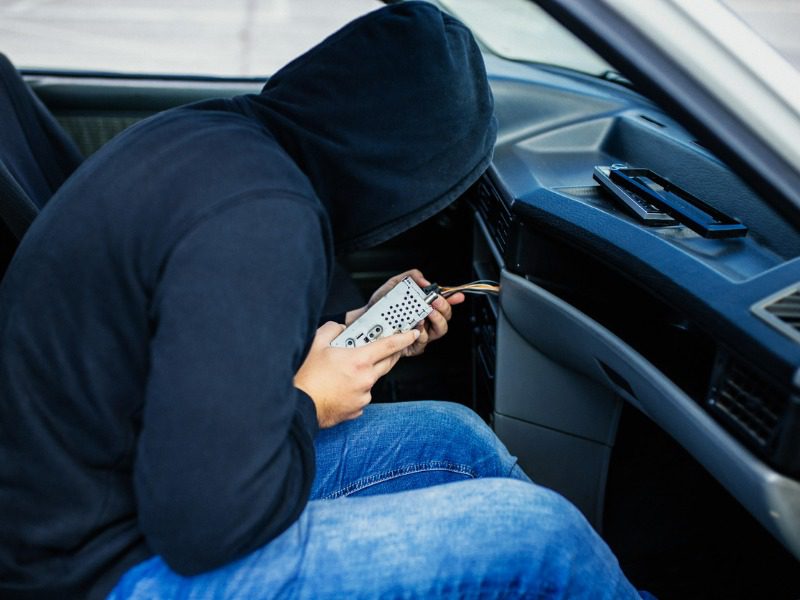Brokers: These tips can help clients avoid getting their cars stolen

Car thefts are rising globally, driven by supply chains problems that have squelched car makers’ access to key components, and pushed up prices for both new vehicles and the parts needed to fix cars already on the road.
In Europe and the U.K., over the past 10 years technology has become the primary method of stealing vehicles, noted Bryan Gast, vice president of investigative services with Équité Association. But in the U.S. the primary theft enabler is drivers who leave keys in their cars.
“Canada’s a bit of a mix between the two,” he said. “We’re starting to see, in the last five years, technology is the predominant way that vehicles are being stolen. Criminals are utilizing tools that are purchased online that can make it very easy.”
For brokers, that creates an opportunity to talk with clients about ways to keep their vehicles safe. Here are some popular theft methods and ways to deter them.
Method: Thieves have taken to accessing something called the onboard diagnostic port (ODP) that provides access to a car’s electronic systems. Once they break into a vehicle, thieves can plug into the ODP and program a new key fob. That lets them start the car and drive it away.
“That is one of the biggest methods in Ontario for stealing vehicles,” said Gast. “This is the sixth year in a row that has increased, so it continues to be a rising trend.”
Defense: Clients can put on an ODP lock, which covers the ODP port. “Some owners have gone so far as actually putting a dummy ODP port into what looks to be the legitimate one below the dash. The thief plugs into it, and nothing happens.”
Other deterrents are mechanical steering-wheel or gas-pedal locks. There also are immobilizing devices that can be wired into a car’s ignition system. Gast notes these require professional installation to avoid invalidating warranties.
Method: Another trend is the ‘relay attack’ which usually involves two criminals using technology that captures door-lock signals on newer cars.
If a car owner parks, walks into the entry of their home and drops their key fob on a table, one criminal carrying an extender antenna walks near the house, while an accomplice pulls a car’s door handle. That triggers a signal to see if the key fob is close by. The antenna picks up that signal and sends back the radio frequency.
“They’re able to capture that and reprogram the key fob and off they go,” said Gast.
Defense: There are two primary methods. Faraday boxes or pouches that block key fob signals can be placed inside a car owner’s home or carried in a pocket or purse.
Behavioural changes also help. “These attacks don’t just happen in residential areas. It can happen in a parking lot. Somebody’s parked their car and now they’re walking towards the mall and can’t remember if they locked their vehicle,” Gast said. “Some of these key fobs have pretty good range and the owner clicks their lock button just to make sure. Somebody in proximity with that device can capture the signal.”
Brokers should also tell clients to be on the lookout for tracking tags (AirTags or SmartTags that were designed to help people find misplaced phones or laptops) that thieves attach to cars they’ve targeted for theft.
“A lot of thieves are walking through a mall parking lot looking for a particular vehicle but there’s not an opportunity to steal it there,” Gast said. “They put their little device somewhere on a vehicle and then, using an app, they track it back to whatever the residence is—and at two or three in the morning they go to work on their shopping list of what they want to take.”
Other ways to deter theft, or recover stolen vehicles, include:
Using GPS trackers installed either by dealers or aftermarket repair shops. They can transmit a stolen vehicle’s location and owners can inform law enforcement.
Parking in well lit areas, putting the vehicle in a garage if possible and always activating the car’s security systems.
Reporting suspicious activity. “If you happen to wake up at two o’clock in the morning and see people walking around [neighbours’] driveways, there’s a good chance that they’re scouting vehicles,” Gast said. “Professional and organized crime groups are canvassing areas, looking for vehicles where people aren’t taking these precautions. Supply chain issues are driving the market [for vehicles] not only nationally but internationally and that’s going to continue to increase.”
Feature image by iStock.com/mladenbalinovac







